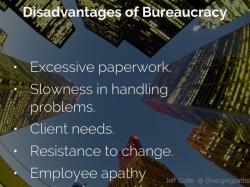Is offshoring good or bad?
Whether offshoring is considered good or bad depends on various factors and perspectives. It has both benefits and drawbacks, and its impact can vary depending on the specific situation and how it's managed. Here's a balanced view of the advantages and disadvantages of offshoring:
Benefits of Offshoring:
Cost Savings: Offshoring to countries with lower labor costs can significantly reduce operating expenses, leading to cost savings for businesses.
Access to Skilled Labor: It provides access to a global talent pool, allowing companies to tap into skilled professionals and specialized expertise.
Increased Efficiency: Offshoring can lead to more efficient business operations, especially for tasks that are repetitive or time-consuming.
Focus on Core Competencies: By outsourcing non-core functions, companies can concentrate on their core competencies and strategic activities.
Market Expansion: Establishing a presence in offshore markets can open up opportunities for growth and expansion in new markets.
Time Zone Advantage: Offshoring to regions with different time zones allows for 24/7 operations, speeding up project completion and customer support.
Drawbacks of Offshoring:
Quality Concerns: Differences in work culture, language, and quality standards can lead to issues with the quality of work or services delivered by offshore partners.
Communication Challenges: Communication barriers due to language differences and time zone variations can hinder effective collaboration.
Loss of Control: Companies may have limited control over offshore operations, which can be concerning for some businesses.
Data Security Risks: Offshoring involves sharing sensitive data, which can pose security and confidentiality risks if not handled properly.
Hidden Costs: While offshoring can reduce labor costs, there may be hidden costs associated with managing offshore relationships, such as legal and travel expenses.
Cultural Differences: Cultural disparities in work ethics and values can lead to misunderstandings and conflicts between onshore and offshore teams.
Political and Economic Risks: Offshore operations can be affected by political instability, economic downturns, and changes in government policies in the host country.
In summary, offshoring is not inherently good or bad; its impact depends on various factors such as the nature of the business, the choice of offshore location, the management of offshore relationships, and the goals of the company. Many businesses have successfully leveraged offshoring to their advantage, while others have faced challenges. To make an informed decision, companies should carefully assess their specific needs, risks, and objectives before pursuing offshoring as a strategy. Effective management and communication are key to maximizing the benefits and minimizing the drawbacks of offshoring.












